
前面刚学完
mybatis-plus
,我们已经基本掌握了更加方便的数据库操作,那么我们也就该做一个web项目练练手了,按理来说,我们该学习学习
thymeleaf
,
thymeleaf
是Spring boot推荐使用的模版引擎。但是,现在更加流行的是 SpringBoot+Vue 形式的前后端分离项目!而前后端分离必然少不了数据交互,那么我们今天就试一试吧!
文章目录
Vue项目的创建
首先,我默认你已经安装了
node.js
以及搭建了
vue
环境(实在不会的同学百度上面的教程可太多了)
- 新建文件夹作为项目存放路径,在导航栏直接输入
cmd进入doc界面

- 在
doc界面直接输入vue ui,浏览器会自动打开,帮助我们进行图形化界面的创建工作(输入vue ui无反应可以看一下这篇文章)

- 这就是进入浏览器的效果,下面那个盘符在这里不能选择,你要是想改变项目地址,就按我开头说的在相应的目录打开
cmd

- 点击
在此创建新项目后,来到以下界面,把最下行的初始化git仓库我们可以叉掉,当然你选了也没事
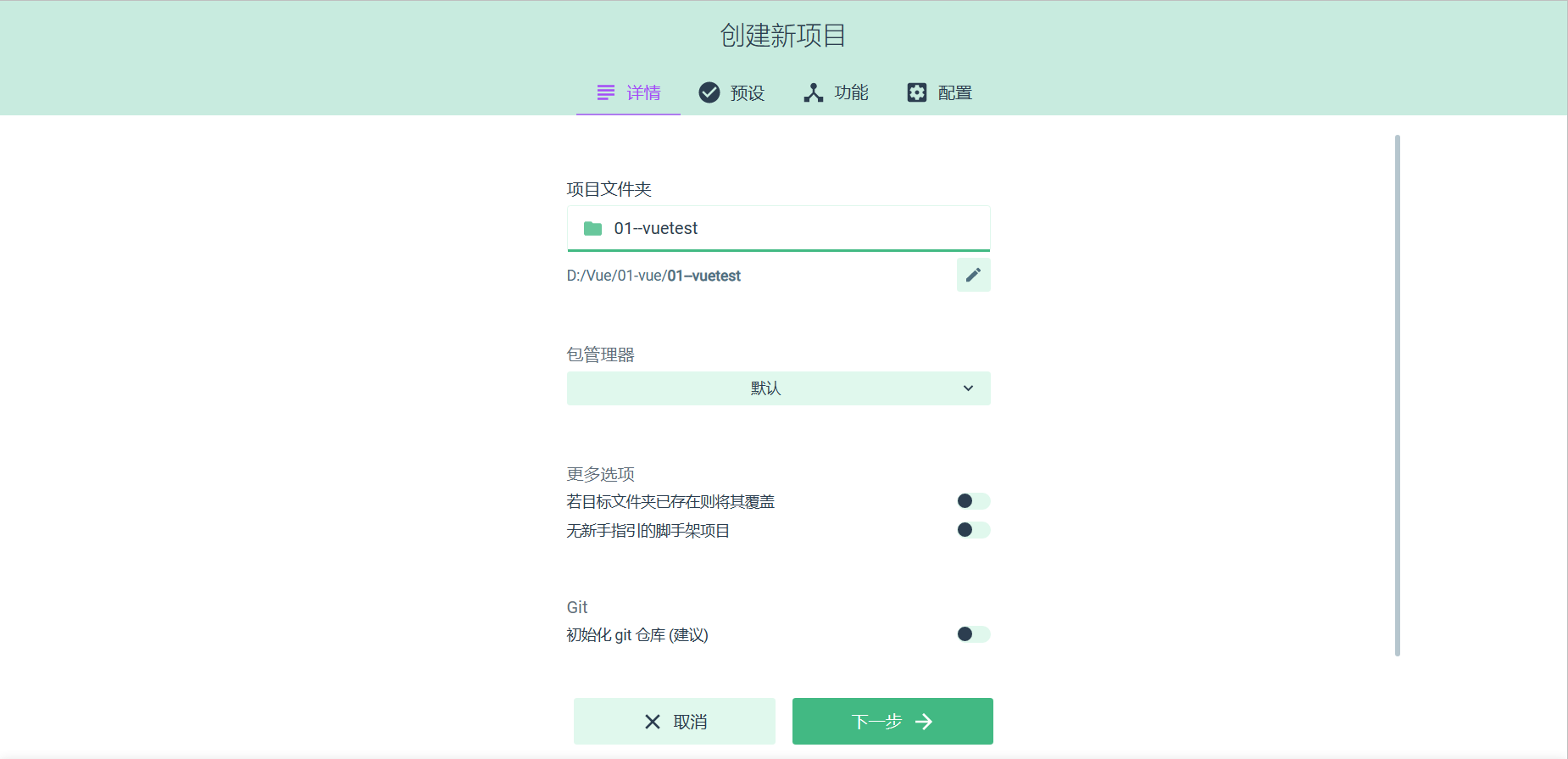
- 我们选择手动创建

- 按下图选择
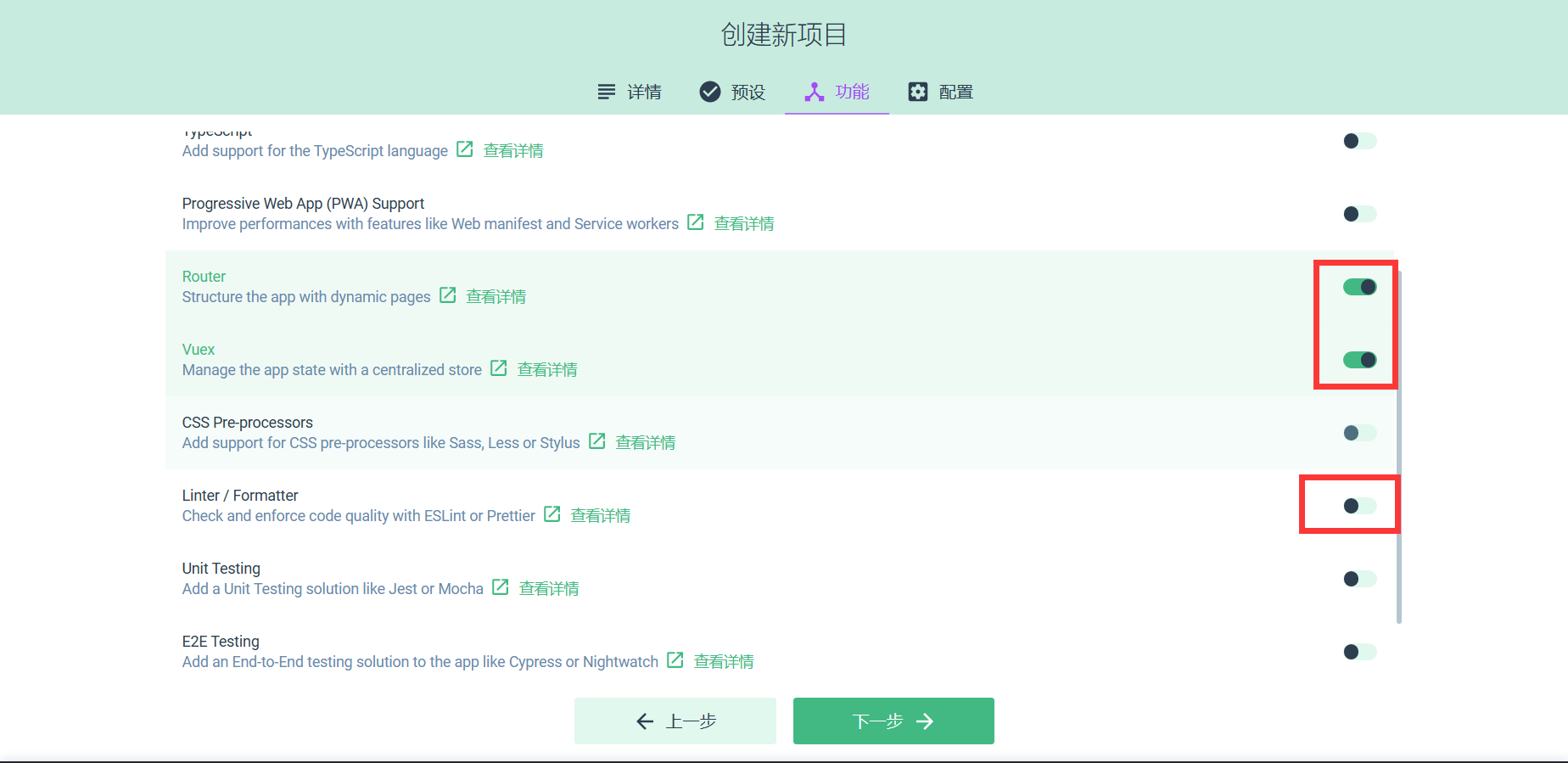
- 这里记得切换一下为
vue2.x版本,不然后面axios可能用不了

- 项目创建完成后直接叉掉就行了,
doc界面按两次ctrl+c就可退出
项目编写
打开Vue项目
使用
Vscode
打开文件夹选择我们的项目路径,打开后就是这个样子
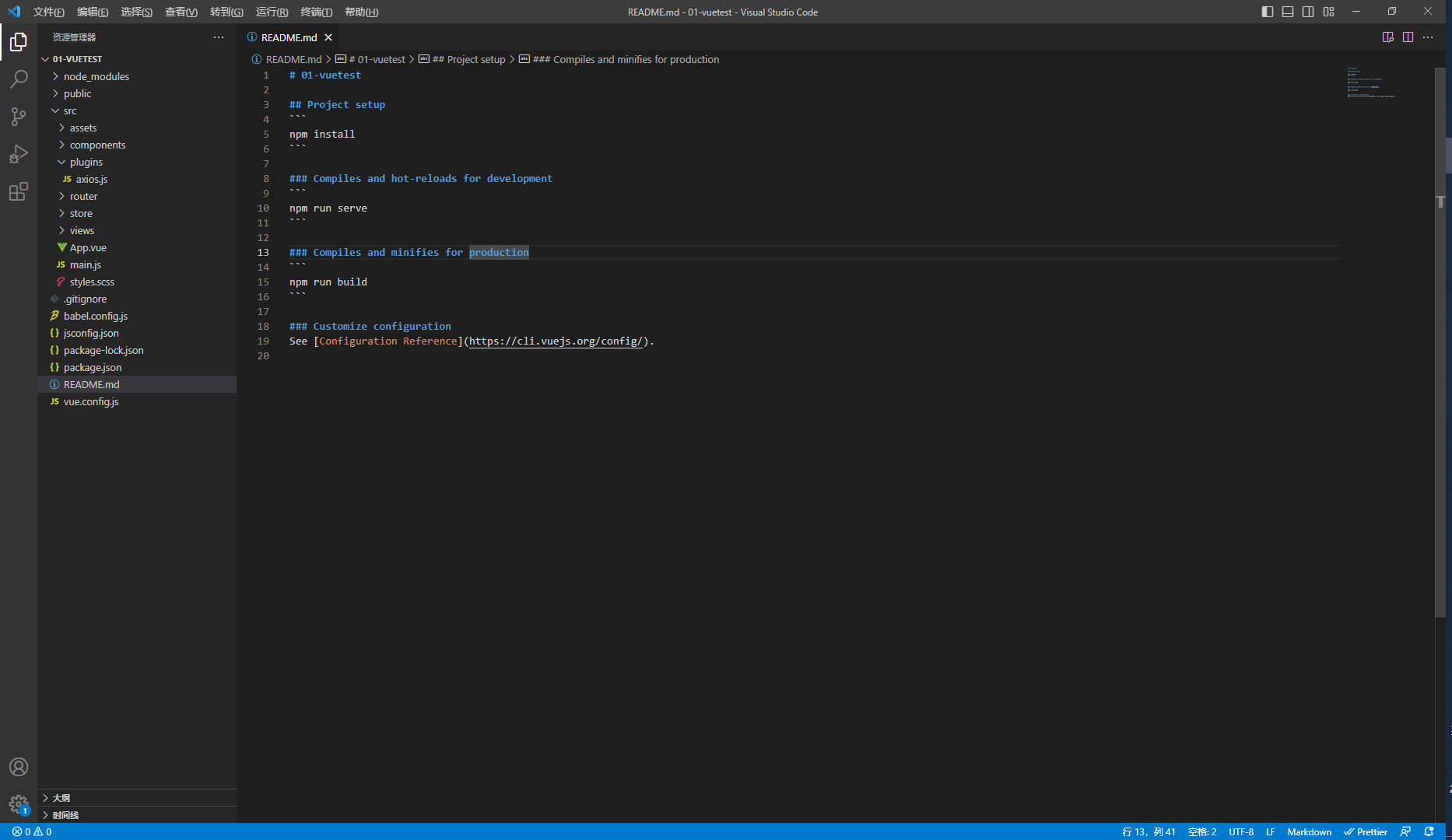
或者使用
idea
选择我们刚刚创建的vue项目路径然后打开,下图就是打开后的样子

两种方式任意选一种就行,下面提到的前端主要指在
Vscode
中执行,后端为
IDEA
中执行
启动Vue项目之效果展示
我们可以在Views下面创建一个
StudentView
,编写一个表格写一些假数据看看效果
<template>
<div>
<table>
<tr>
<td>ID</td>
<td>姓名</td>
<td>年龄</td>
<td>爱好</td>
</tr>
<tr v-for="item in students">
<td>{{item.id}}</td>
<td>{{item.name}}</td>
<td>{{item.age}}</td>
<td>{{item.hobby}}</td>
</tr>
</table>
{{msg}}
</div>
</template>
<script>
export default {
name: "Student",
data(){
return{
msg:"Hello Vue",
students:[
{
id:"1",
name:"tom",
age:18,
hobby:"篮球"
},
{
id:"2",
name:"tom",
age:18,
hobby:"篮球"
},
{
id:"3",
name:"tom",
age:18,
hobby:"篮球"
},
],
}
},
}
</script>
<style scoped>
</style>
接着需要去
router
包下的
index.js
的
routes
l列表中添加路由(请注意每次写了新的xxxView都需要添加路由)
{
path: '/student',
name: 'student',
component: () => import('../views/StudentView')
}
VScode
:在终端(左上角
Terminal
,新建终端)输入
npm run serve
启动服务,浏览器输入
http://localhost:8080/student
idea
:在终端(左下角
Terminal
)输入
npm run serve
启动服务,浏览器输入
http://localhost:8080/student
展示效果:
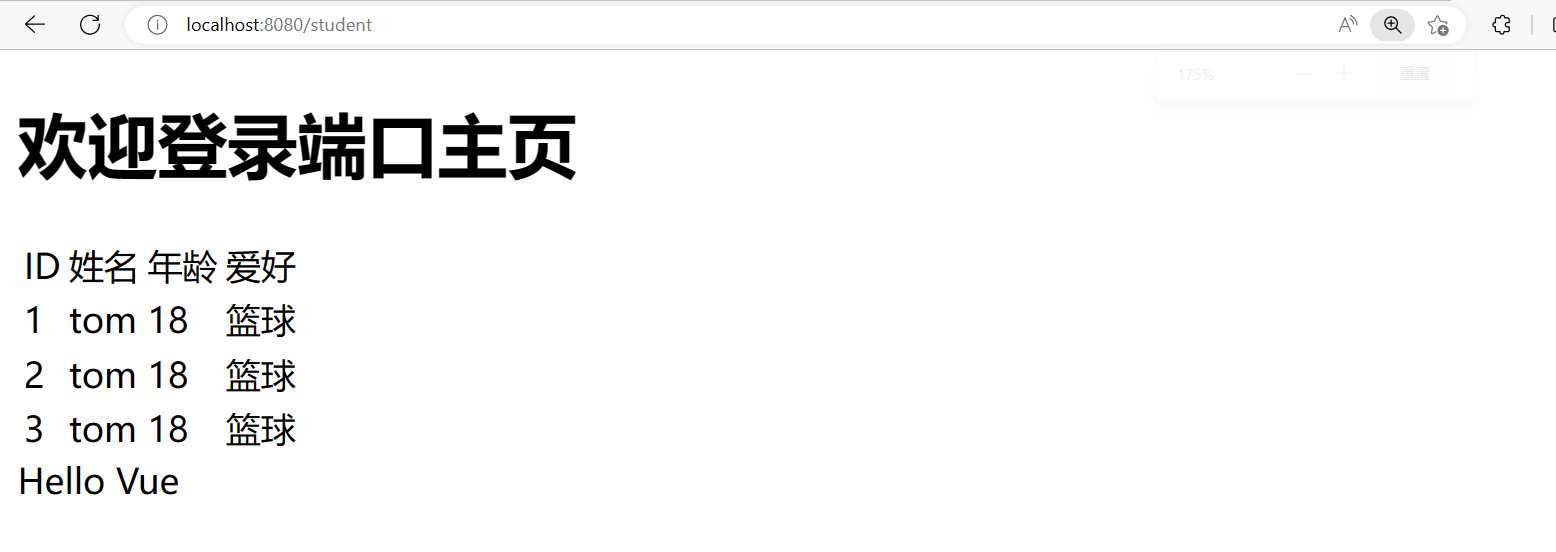
Vue项目启动失败
有些童鞋在启动Vue项目的时候可能报错
Module not found: Error: Can't resolve 'sass-loader' in 'E:\xxx\xxx\01-vuetest'
,不用慌,跟着报错信息做,
产生原因:说明项目中没有
sass-loader
依赖,由于
sass-loader
需要
node-sass
组件,所以我们需要安装的是两个组件
- node-sass
cnpm install sass-loader -D
- sass-loader
cnpm install node-sass -D
使用cnpm前需要配置淘宝镜像
npm install -g cnpm --registry=https://registry.npm.taobao.org
axios的引入
在上面的页面中,我们成功的展示出了
/student
页面下的student数据,但那是我们手写的假数据,我们如何获得后端发送过来的数据呢,那就需要用到一个很重要的封装库
axios
,
axios
是基于 Promise 的 ajax 封装库,也是前端目前最流行的 ajax 请求库。简单地说发送 get、post 请求,是一个轻量级的库,使用时可直接引入
在终端输入:
vue add axios
然后就会发现我们多了一个
plugins
包,包下多了一个
axios.js
文件。
前端页面StudentView
现在修改我们的前端代码,利用
axios
发送
get
请求:
<template>
<div>
<table>
<tr>
<td>ID</td>
<td>姓名</td>
<td>年龄</td>
<td>爱好</td>
</tr>
<tr v-for="item in students">
<td>{{item.id}}</td>
<td>{{item.name}}</td>
<td>{{item.age}}</td>
<td>{{item.hobby}}</td>
</tr>
</table>
{{msg}}
</div>
</template>
<script>
export default {
name: "Student",
data(){
return{
msg:"Hello Vue",
students:null, // 之前这里存放的是假数据列表,现在我们可以直接让他为null
}
},
created() {
const _this = this // 这里的this是全局
axios.get("/select/").then(function (resp){ // 因为我们在main.js文件配置了后端端口的访问地址(下文有讲),所以这里可以直接'/select/'
_this.students = resp.data // 这里如果用this指得就是这个匿名函数了
})
}
}
</script>
<style scoped>
</style>
后端接口StudentController
现在编写我们的后端,打开我们之前的SpringBoot项目,(我们就拿之前创建过的实体类练手吧,会用到的实体类分别是User和Student,User用来登录,Student用来数据展示)
这里再贴一下两个实体类吧
@Data// 返回set,get等方法@NoArgsConstructor// 无参构造器@AllArgsConstructor// 全参构造器publicclassUser{privateint id;privateString name;privateString pwd;}
@Data@AllArgsConstructor@NoArgsConstructorpublicclassStudent{privateLong id;privateString name;privateInteger age;privateString hobby;}
来到后端的第一件事情就是去
application.yaml
更改后端接口
server:port:8081# 后端修改端口为8081,8080已经被前端占用
现在可以在前端的
main.js
文件中添加后端端口
// 配置后端端口的访问地址
axios.defaults.baseURL = 'http://localhost:8081';
开始编写后端接口:
StudentMapper:继承BaseMapper,不明白的同学可以看完上篇文章 整合mybatis-plus 及其相关用法
@RepositorypublicinterfaceStudentMapperextendsBaseMapper<Student>{}
StudentService:
publicinterfaceStudentServiceextendsIService<Student>{}
StudentServiceImpl:
@ServicepublicclassStudentServiceImplextendsServiceImpl<StudentMapper,Student>implementsStudentService{}
StudentController:
@RestControllerpublicclassStudentController{@AutowiredprivateStudentMapper studentMapper;@RequestMapping("/select")publicList<Student>select(){return studentMapper.selectList(null);}}
跨域问题的引入
为什么会有跨境问题:简单来说就是你前端端口是8080,后端是8081,端口不一样就涉及到跨域问题。
前后端都可以解决跨域问题,我们就在后端来解决吧,在SpringBoot项目的
config
下创建一个配置类:
@ConfigurationpublicclassCrosConfigimplementsWebMvcConfigurer{@OverridepublicvoidaddCorsMappings(CorsRegistry registry){
registry.addMapping("/**").allowedOriginPatterns("*").allowedMethods("GET","HEAD","POST","PUT","DELETE","OPTIONS").maxAge(3000).allowedHeaders("*");}}
运行开始前先给大家看看数据库信息
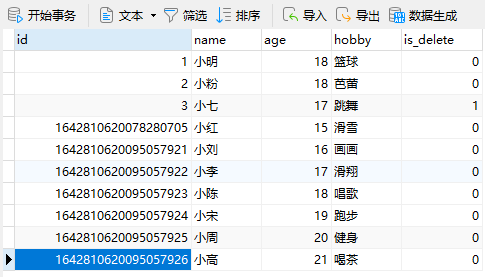
运行项目
在前端输入
npm run serve
后端在启动类运行我们的
SpringBoot
项目
浏览器输入
localhost:8080/student
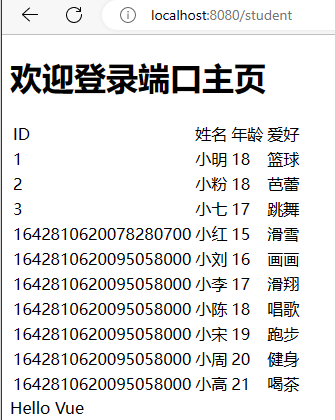
显然,我们的数据交互已经实现,前端成功从后端拿到了我们的数据,测试成功!
element-UI的引入
上面的输出效果是不好看的,那我们就浅浅的介绍一下
element-ui
吧
停止项目,在终端输入
npm i element-ui -S
,等待下载…
然后我们之间去浏览器找到
element
中文官网
选择一个自己喜欢的表格,然后把他的代码复制过来

再选择一个好看的分页效果,同样复制他的代码
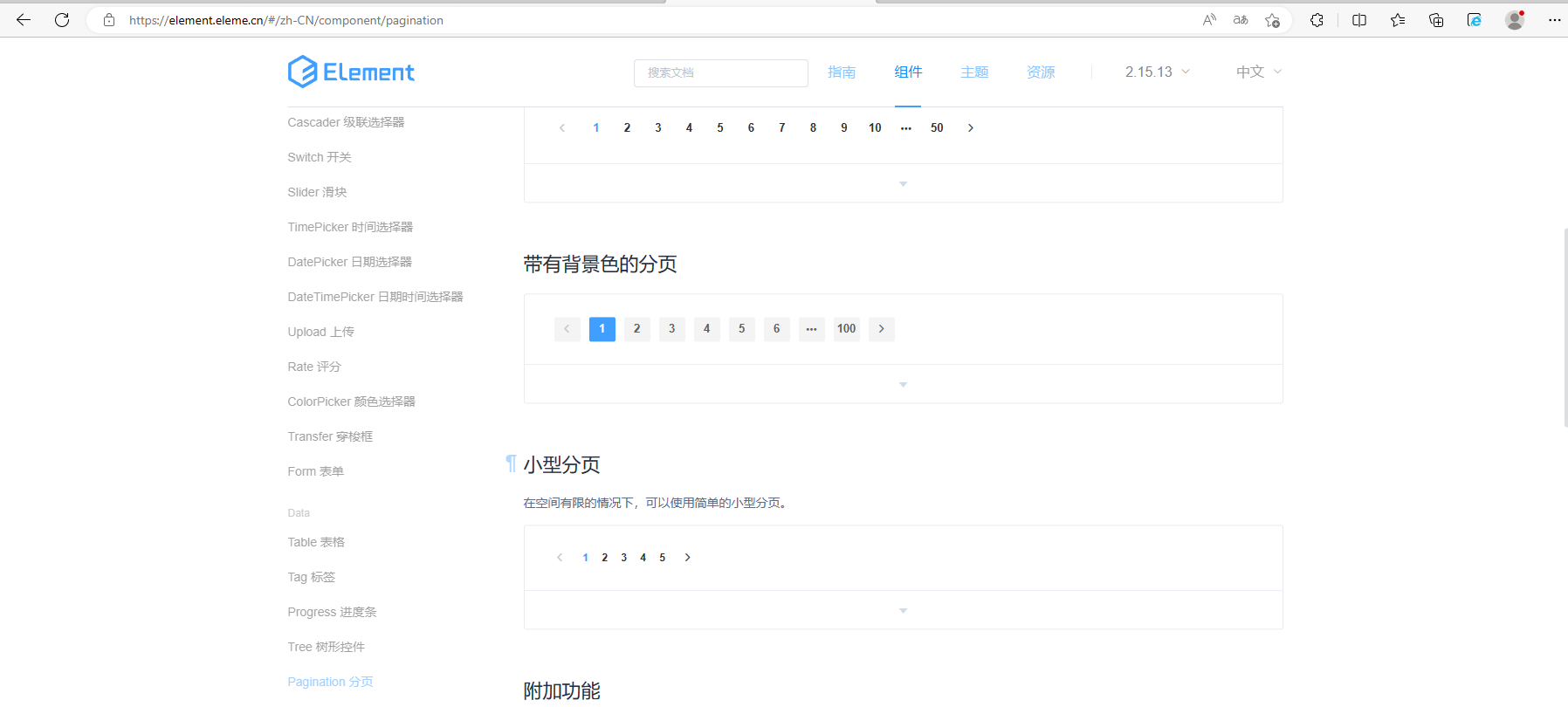
前端页面PageView
我们在前端的
views
包下新建一个
PageView
用来装我们刚刚复制的代码(注意标签中只允许含有一个div标签,所以大家复制的代码都要装在一个div标签里面),然后我们根据自己的数据库信息做一些简单的修改:
<template>
<div>
<el-table
:data="tableData"
border
style="width: 100%">
<el-table-column
fixed
prop="id"
label="学号"
width="200">
</el-table-column>
<el-table-column
prop="name"
label="姓名"
width="150">
</el-table-column>
<el-table-column
prop="age"
label="年龄"
width="150">
</el-table-column>
<el-table-column
prop="hobby"
label="爱好"
width="150">
</el-table-column>
<el-table-column
fixed="right"
label="操作"
width="120">
<template slot-scope="scope">
<el-button @click="handleClick(scope.row)" type="text" size="small">查看</el-button>
<el-button type="text" size="small">编辑</el-button>
</template>
</el-table-column>
</el-table>
<el-pagination
background
layout="prev, pager, next"
:page-size="5"
:total="50"
@current-change="page">> <!-- 页面翻页变化 -->
</el-pagination>
</div>
</template>
<script>
export default {
methods: {
handleClick(row) {
console.log(row);
},
page(currentPage){
// alert(currentPage)
const _this = this
axios.get("/select/"+currentPage+"/5").then(function (resp) {
// console.log(resp) // 注意使用console.log(resp)查看控制台我们的数据在哪里哦,比如我的就在data的records下面
_this.tableData = resp.data.records
_this.total = resp.data.length
})
}
},
created() {
const _this = this
axios.get("/select/1/5").then(function (resp) {
// console.log(resp)
_this.tableData = resp.data.records
_this.total = resp.data.length
})
},
data() {
return {
total:null,
tableData: null,
}
}
}
</script>
仔细的同学应该有所发现,上面的代码中我们不仅用了钩子函数
created()
还在
methods
中新增了一个
page()
方法,没错,他就是来帮助我们实现表格翻页的
后端接口的编写
实现了前端的翻页效果,我们就要去后端修改代码了,我们依旧使用
StudentController
:
@RestControllerpublicclassStudentController{@AutowiredprivateStudentMapper studentMapper;@RequestMapping("/select/{page}/{size}")publicPage<Student>select(@PathVariable("page")int page,@PathVariable("size")int size){Page<Student> pages =newPage<>(page, size);return studentMapper.selectPage(pages,null);}}
上面的代码中利用了
mybatis-plus的分页插件
,不了解同学依旧可以去看我的上一篇博客整合mybatis-plus 及其相关用法
项目启动观看效果:
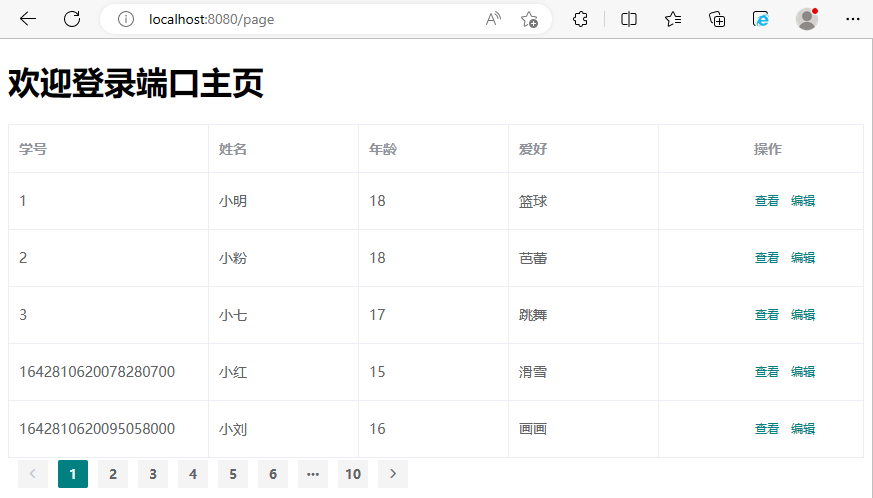
是不是精致了许多,点击下面的标签还能翻页呢
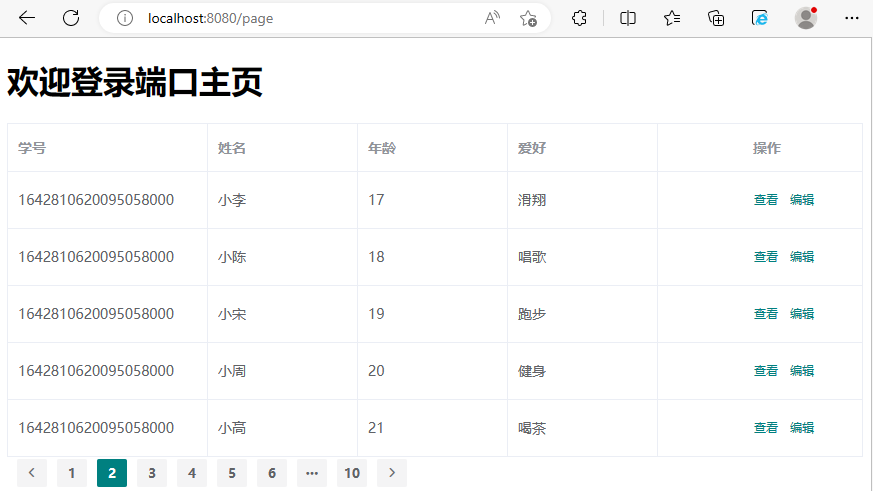
增加登录功能
老规矩,该去网上复制的就去复制,一些简单的界面不需要我们去写
前端页面LoginView
在
view
包下新增
LoginView
<template>
<div>
<el-form
ref="loginForm"
label-width="80px"
class="login-box"
>
<h3 class="login-title">欢迎登录</h3>
<el-form-item
label="账号"
prop="username"
>
<el-input
type="text"
placeholder="请输入账号"
v-model="loginForm.username"
/>
</el-form-item>
<el-form-item
label="密码"
prop="password"
>
<el-input
type="password"
placeholder="请输入密码"
v-model="loginForm.password"
/>
</el-form-item>
<el-form-item>
<el-button
type="primary"
v-on:click="login"
>登录</el-button>
</el-form-item>
</el-form>
</div>
</template>
<script>
import Cookies from "core-js/internals/task";
export default {
name: 'LoginView',
data () {
return {
loginForm: {
username: '',
password: ''
},
responseResult: []
}
},
methods: {
login () {
const _this = this
axios
.post('/login', {
"name": _this.loginForm.username, // 注意,你后端的User实体类叫name,pwd
"pwd": _this.loginForm.password // 这里也就要叫name!pwd!不然后端接口得不到参数!
})
.then(successResponse => {
console.log(successResponse.data)
if (successResponse.data.code === 200) { // 后端返回状态码为200则验证成功
_this.$router.push("/page"); // 登录成功页面跳转到page页面
} else {
alert("用户名或密码错误!")
}
})
.catch(function (error) {
alert("用户名或密码错误!")
});
}
}
}
</script>
<style scoped>
.login-box {
border: 1px solid #dcdfe6;
width: 350px;
margin: 180px auto;
padding: 35px 35px 15px 35px;
border-radius: 5px;
-webkit-border-radius: 5px;
-moz-border-radius: 5px;
box-shadow: 0 0 25px #909399;
}
.login-title {
text-align: center;
margin: 0 auto 40px auto;
color: #303133;
}
</style>
后端接口LoginController
@ControllerpublicclassLoginController{@AutowiredprivateUserService userService;@PostMapping("/login")@ResponseBodypublicR<User>login(@RequestBodyUser user){LambdaQueryWrapper<User> queryWrapper =newLambdaQueryWrapper();
queryWrapper.eq(User::getName, user.getName());User userOne = userService.getOne(queryWrapper);if(!userOne.getPwd().equals(user.getPwd())){returnR.error("密码错误");}returnR.success(userOne);}}
R类是我们通用的返回值封装,这里再贴一下
@DatapublicclassR<T>{/** 编码:200成功,0和其它数字为失败*/privateInteger code;/** 信息返回*/privateString msg;/** 信息返回数据*/privateT data;publicstatic<T>R<T>success(T object){R<T> r =newR<T>();
r.data = object;
r.code =200;
r.msg =CommonConst.SUCCESS_RESULT;return r;}publicstatic<T>R<T>error(String msg){R r =newR();
r.msg = msg;
r.code =0;return r;}}
实现效果:
登录成功直接跳转到page页面

登录失败消息提醒
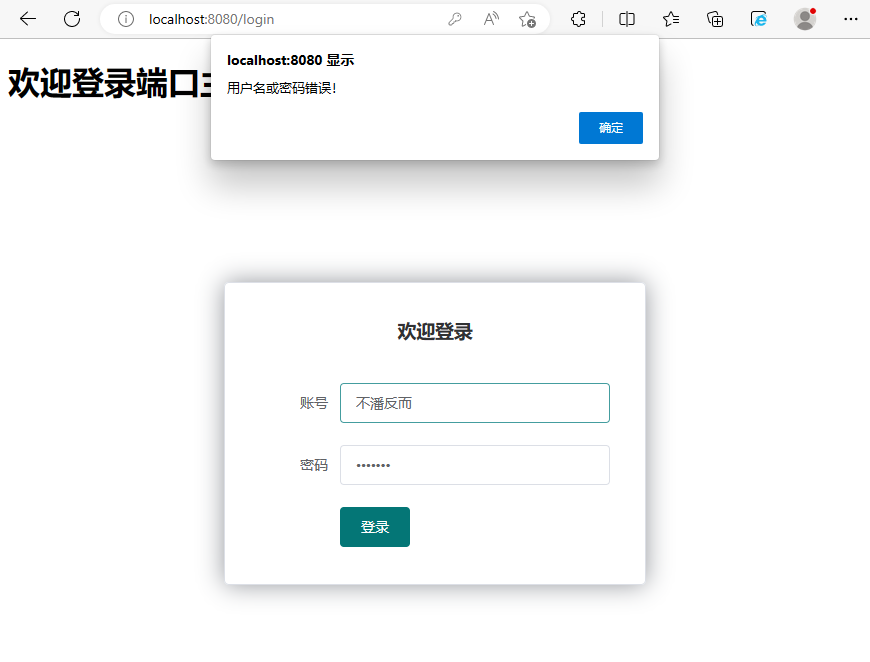
题外话
ajax
发送
post
请求,后台接收数据时候我们要用
@RequestParam
接收,因为它的
Content-Type
就是用的表单提交的,对于
axios
的
post
请求我们需要用
@RequestBody
接收,因为它内部处理时候
Content-Type
指定是
application/json
类型,所以我们需要注意,这些都是默认情况下,我们ajax原生发请求也可以自己指定头,所以根据情况选择
虽然我们只实现了
登录
和
学生信息展示
两个功能,但是你仔细想想是不是分别实现了
前端传数据后端接收
和
后端传数据前端接收
那其他的增删改查就交给大家自己了~
版权归原作者 吧啦吧啦! 所有, 如有侵权,请联系我们删除。